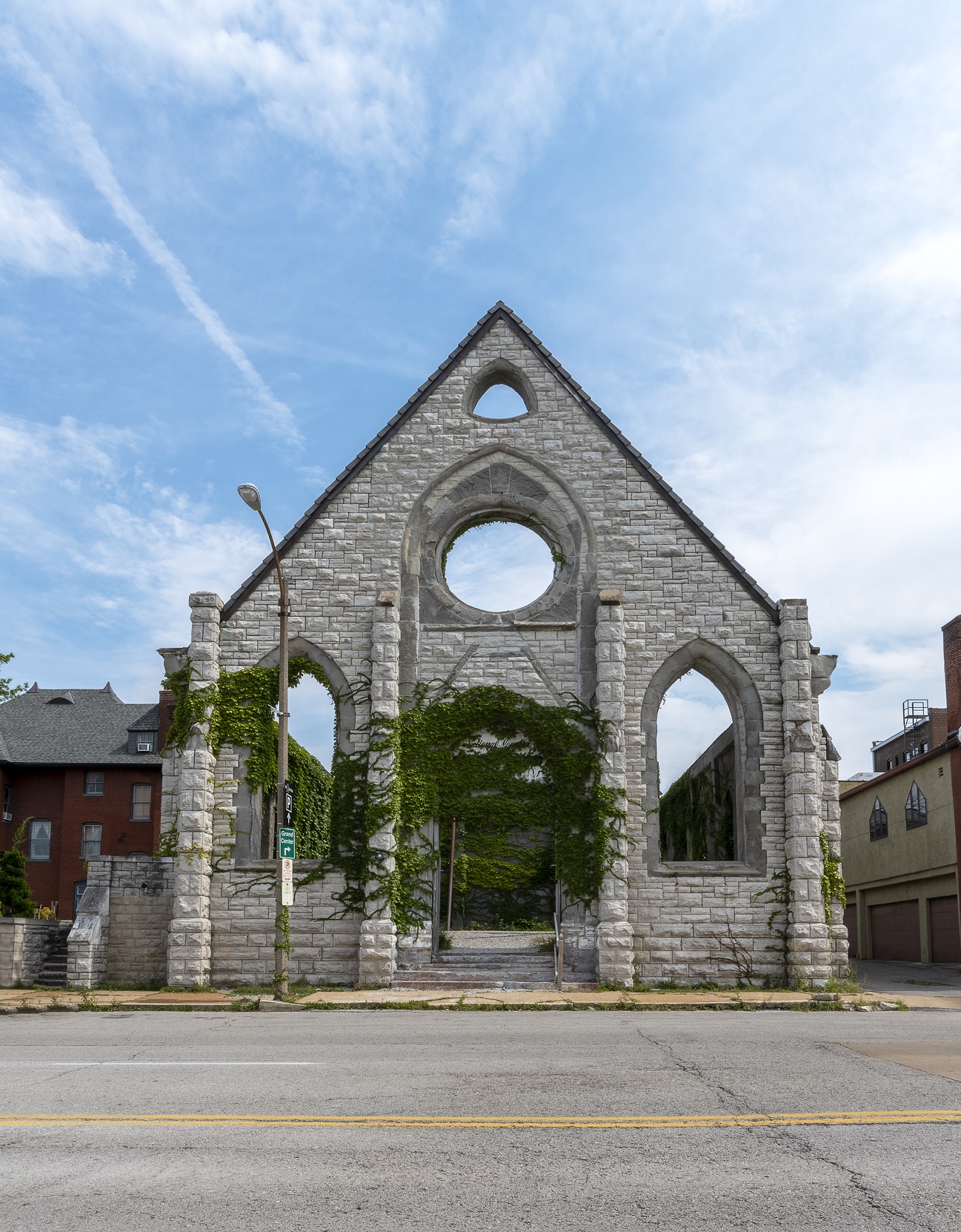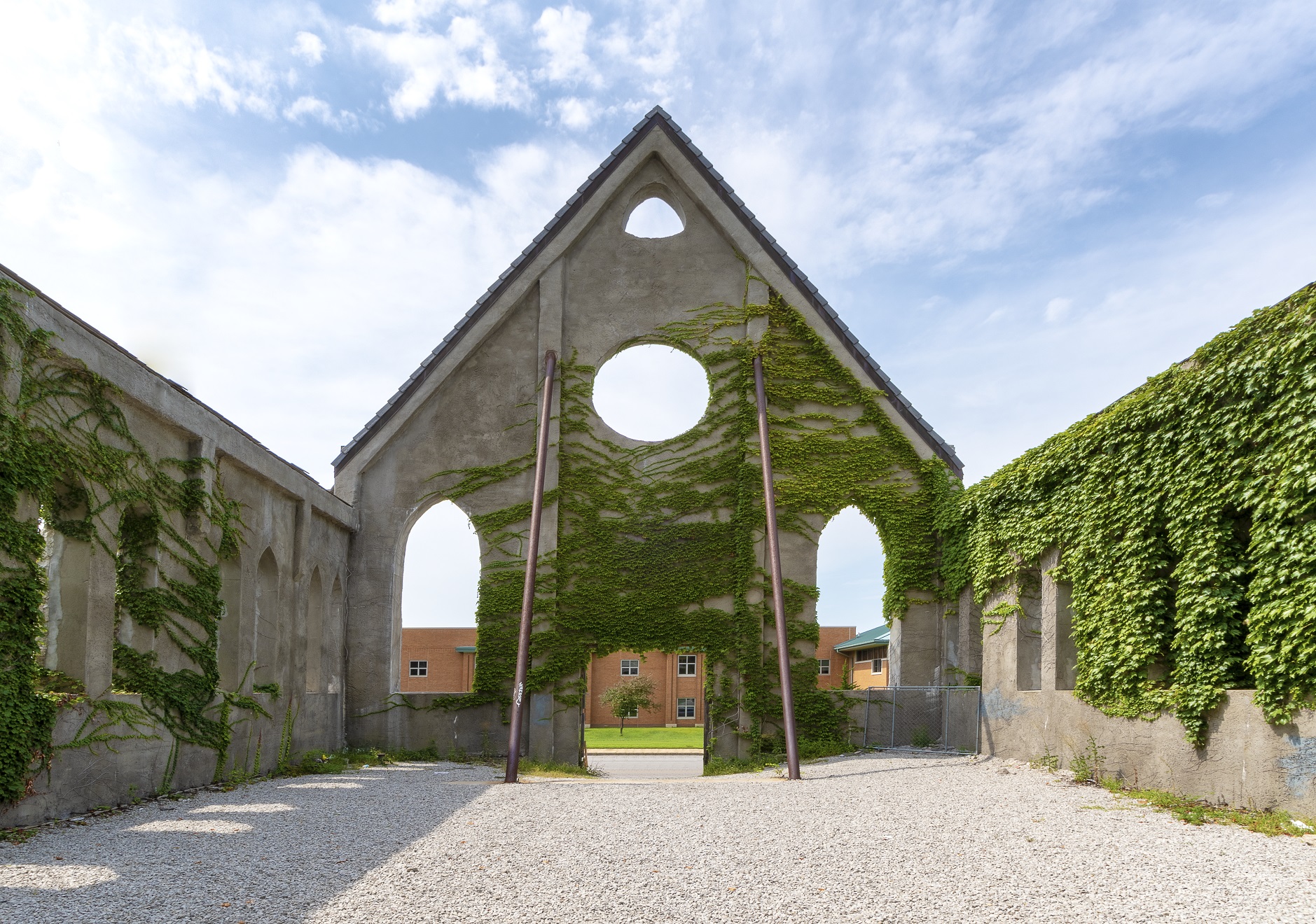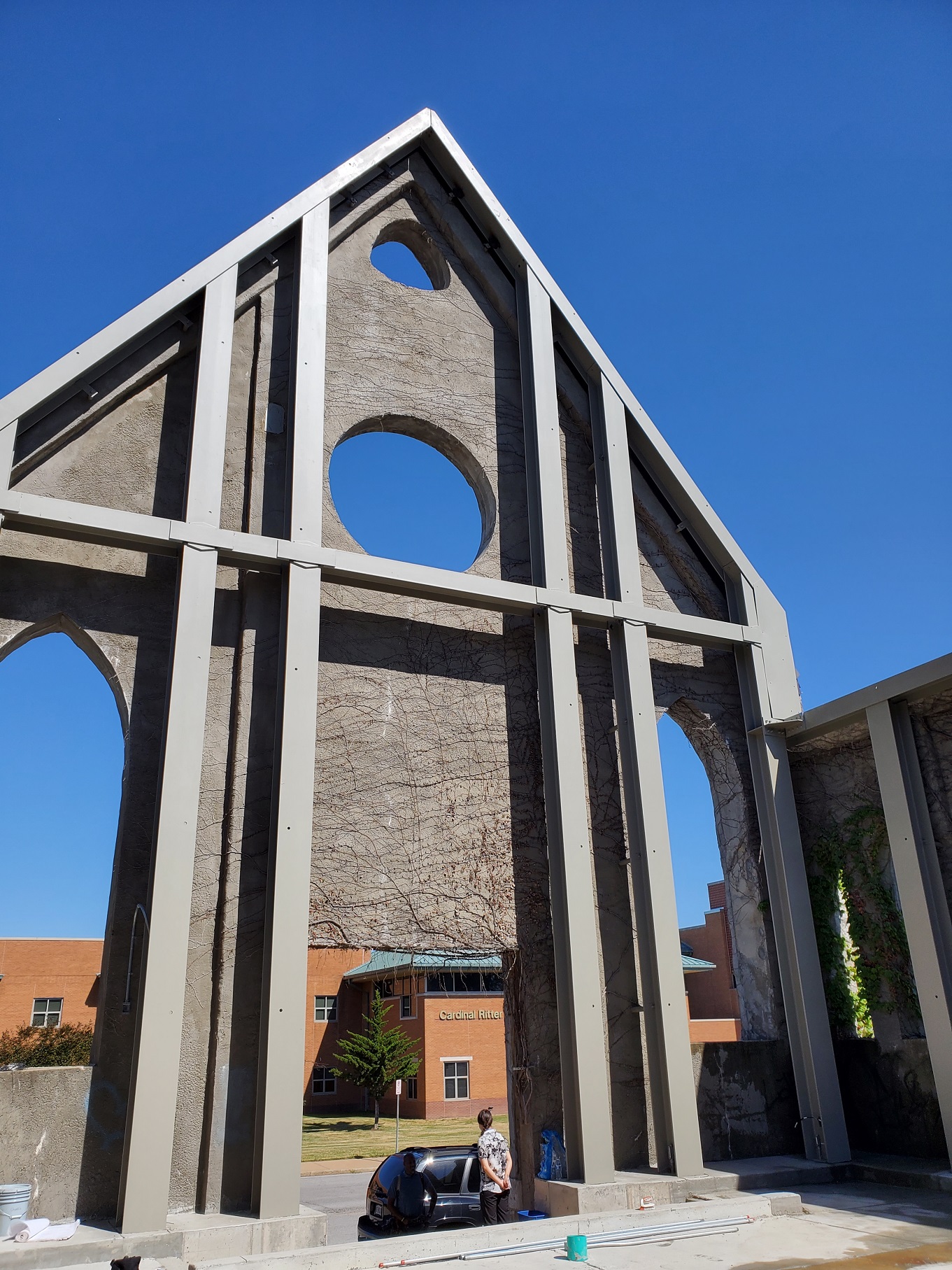
Frequent theatergoers or visitors to nearby galleries may have driven by and wondered about the ruins from a church that still stand in the Grand Center Arts District in Midtown St. Louis.
Often referred to as the “Spring Church,” the empty shell of the Gothic Revival-style edifice at 620 N. Spring Ave. has long been a source of fascination for those who catch a glimpse of it as they scurry along in search of a parking spot before a show at the Fox Theatre or at Powell Hall.
“One day, not too long ago, a group of us was standing in front of the church when a woman stopped her car in the middle of the street and said, ‘You’re not tearing that down, are you?’” said Emily Rau Pulitzer, founder of the Pulitzer Arts Foundation. “It had been almost 20 years with nobody being able to do anything with it. We had used (the space) in the past, and we realized what an important part of the neighborhood it was – and so, we took it on.”

The Pulitzer Arts Foundation, a museum located on Washington Avenue and just a short walk from the church, purchased the 1,960-square-foot structure and its adjacent property in May 2020 with a goal of creating a welcoming, open-air space for members of the community and for artists to display their work.
Built in 1884, the church was home to four congregations over the years, beginning with a Baptist church that moved from the Metro East. In 2001, a fire left the building in ruins and forced its last congregation, the National Memorial Church of God in Christ, to relocate. The property was then purchased by the nonprofit Grand Center, Inc. in 2003 in hopes of turning it into an outdoor sculpture garden. However, structural concerns prevented the plan from moving forward and the church’s empty shell remained.

When the Pulitzer assumed ownership of the structure, it also acquired the adjacent corner lot on Spring and Delmar avenues. The lot once belonged to famed architect Theodore Link, who is best known for designing St. Louis Union Station. Link lived on the property with his family until his death in the early 1920s.
Pulitzer Arts Foundation executive director Cara Starke says the goal has always been to preserve the area’s historical significance.
“You could tell something happened here,” she said, referring to both the church structure and the adjacent land. “And we want to give it that sense of history.”
Improvements to the church began two years ago as the Pulitzer worked with structural engineers and architects to develop a design that would stabilize the framework while maintaining its character. For two decades, the roofless church and the ivy that clung to it made the structure an iconic presence in the neighborhood. Keeping those essential details intact was key.
“To be able to walk into the church and see the sky was an important thing,” said lead architect Kiku Obata, director of Kiku Obata & Company. “There’s a spiritual sense when you walk inside, and we wanted for the space to feel as untouched as possible.”

While upgrades such as recessed planters, accessible pathways, updates to the masonry, and new electrical and lighting infrastructure will be evident, the symbolic nature of the church remains.
“There will be no doors – just as it was before – so anyone can walk in,” Starke noted.
In addition, it is hoped the lush Virginia creeper vine that wrapped itself around the building will return to an even greater degree, providing a seamless transition into the adjoining lot, which has been transformed into a verdant public space. The new accessible landscaping features plants and seating that complement architectural elements from a former building uncovered during construction.

In addition to Kiku Obata & Company, project leads include McNealey Engineering, Inc. Studio Land Arts of Granite City oversaw the landscape design.
The church’s transformation is modeled after Park-Like, the Pulitzer’s sustainably designed green space located across the street from the museum. Like Park-Like, the Spring Church will be open daily, free of charge, from sunrise to sunset.
Beginning next month, a series of events is planned to celebrate the project’s completion, including art installations, public gatherings and even a farmers market.
On July 16, artist Jordan Weber’s site-specific piece, “All Our Liberations,” opens to the public. The weeklong installation featuring a three-tiered sculpture inspired by Japanese Zen gardens will be on view through July 24.
The official opening celebration for the Spring Church is planned for October and will feature a performance by the St. Louis Symphony Orchestra In Unison Chorus. Other events will be announced at a later date. For more information, visit pulitzerarts.org.





